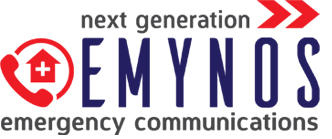Second Workshop on Next Generation Emergency Communications
Date: 27. November 2017
Current emergency systems and 112 services are generally based on legacy telecommunication technologies, which cannot cope with IP-based services that European citizens use every day. Some of the related limitations are the partial media support, the lack of integration of social media, and the use of an analogue modem for providing e-Call services with limited data amount. Most operators have started migrating towards broadband IP-based infrastructures, and this allows for current emergency systems to be upgraded and adapted in order to fulfill regulatory requirements in terms of Next Generation emergency services.
In order to provide a forum to researchers and industry partners to keep track of the work progress in the context of Next Generation emergency services, the first workshop collocated with the IEEE TEMU conference 2016 in Crete, Greece, was organized by the EMYNOS project consortium. This workshop succeeded in elaborating on several actual questions through key speeches from industry (Google), regulators (FCC), and current research projects such as EMYNOS and NEXES.
On November 27, 2017, the second workshop on Next-Generation Emergency Communications organized by the EMYNOS project successfully took place at the headquarters of the Spanish National Police in Madrid. The event gathered more than 60 stakeholders from the research, industry and end-user communities, including organizations working in 112 emergency services.
This workshop focused on presenting the EMYNOS project ESInet, particularly, in terms of architecture specification and implementation regarding total conversation, WebRTC based emergency calls, accurate location for emergency calls, and solutions for persons with disabilities. In addition to the presentations from the EMYNOS partners, the event also featured key talks from Madrid 112 centre and the NEXES project, followed by a roundtable session where the main speakers answered to the audience’s questions and discussed the future of emergency communications.
A hackathon took place in parallel to give an overview of the EMYNOS testbed/ESInet and conduct interoperability tests. Various organizations and projects attended the hackathon including The NEXES project and HUAWEI.
The workshop was collocated with the 17th PSCE Conference, where an overview of EMYNOS was further presented by Yacine Rebahi on November 29th. The EMYNOS presentation generated a variety of questions by the audience illustrating the widespread interest in the project development and achievements. The PSCE Conference gathered more than 90 international stakeholders in Public Safety Communications.
Information about the first workshop
EMYNOS Project Consortium
EMYHACK Hackathon
The EMYHACK hackathon was held in Madrid on November 27, 2017 right before the PSCE conference and run in parallel to the 2nd EMYNOS emergency services workshop. The EMYHACK can be seen as a collaborative event between the EMYNOS consortium and other stakeholders concerned with the evolution and deployment of Next Generation emergency services. This hackathon had several objectives:
- Giving an overview of the EMYNOS testbed/ESInet and how it can be used
- Enabling interoperability tests between software components and products that are compliant
to the EENA NG112 LTD document and the NENA i3 architecture - Enabling NG112 and NG911 products manufacturers to test their products and solutions against legacy systems
- Supporting the development of innovative solutions for current and future emergency services challenges
EMYNET involves various sessions including,
- Testing location configuration, audio, video, WebRTC, Real Time Text over VoIP networks and IMS
- Testing emergency related sensor data transmission and the use of haptic devices
- Testing NG emergency calls towards legacy PSAPs
The EMYHACK event was free of charge and open to all institutions (industry, public sector, academia) interested
in testing their Next Generation solutions either in Madrid or remotely.
Note: The EMYNOS project started making some of the developed components/functionalities open source in order to facilitate interoperability tests and support the development of innovative solutions for current and future emergency services. For more details, we refer to “Open Source”.
